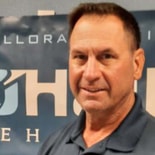Troubleshooting Difficult Cases in Joint Arthroplasty
Presented by John O’Halloran
12-Month Subscription
Unlimited access to:
- Thousands of CE Courses
- Patient Education
- Home Exercise Program
- And more
Non-Financial: John O’Halloran has no competing non-financial interests or relationships with regard to the content presented in this course.
With the emergence of the baby boomer generation, there has been a significant rise in joint arthroplasty surgeries in the past five years. The projections are staggering. In the United States, there are 1 million hip and knee arthroplasties, and that number will grow to 5 million in the next 8–10 years. With that growth and the changes in the United States health care reimbursement and utilization control, it is imperative that today’s clinician who works with total joints be able to address the difficult cases. Currently, joint arthroplasty patients have outcome data showing approximately 80 percent overall satisfaction at 20 years post-operation. Having said that, patient expectations are higher today than ever before. The clinician who can expedite the rehab process and address the difficult cases will be the clinician that the well-informed patients will seek to do their rehabilitation. This course will provide the clinician treatment sequence strategies incorporating manual therapy and corrective exercises that involve the entire kinetic chain. This course is ideal for all settings and has been developed to address the following difficult cases:
- The dreaded shoulder hike or shrug in shoulder arthroplasty
- The total hip patient who has Trendelenburg gait
- The total knee patient who can’t achieve desired range of motion
- The total knee and hip patient who has persistent pain and has been told by an MD that “the X-rays are perfect” and that “you just need time” and “your knee was the worst one I've ever seen”
Meet your instructor

John O’Halloran
John O’Halloran, PT, DPT, OCS, ATC (retired), CSCS (retired), Cert MDT, Certified SCTM-1 Practitioner, is a board-certified orthopedic clinical specialist by the American Physical Therapy Association and has over 30 years of experience in the field of orthopedics. He earned his post-professional Doctor of Physical Therapy…
Chapters & learning objectives

1. The Shoulder Shrug and Hike Shoulder Arthroplasty Patient
There are four main muscle restrictors to human arm elevation, and those muscles must be released very early on (while the patient is still in a sling) to achieve proper range of motion following shoulder arthroplasty. The majority of shoulder arthroplasty patients have weak or nonfunctioning rotator cuffs. This chapter will equip the clinician with new manual therapy shoulder and scapular releases as well as upper extremity corrective exercises.

2. Altered Gait in the Total Hip and Knee Patient
Today’s health care system has a goal to increase the number of total joint arthroplasties to be performed as outpatient procedures and discourage traditional therapy following the surgery. Clinicians, therefore, must know what’s “inside the box” before they think outside the box and understand the proper motor control sequence required to establish a faster, more normal gait as soon as possible. By using strategies taught in this chapter, the clinician will be able to expedite the rehab process and meet the patient’s number one goal: to walk more normally as soon as possible.

3. The Stiff Total Knee Patient
Traditional basic knee range of motion stretching methods are successful the majority of the time in knee arthroplasty. However, when a clinician is faced with a stiff knee, those methods will not achieve the desired result. It can result in the patient going for a manipulation under anesthesia or having unsatisfactory results. This chapter is geared toward preventing the patient from developing a stiff knee, by stressing key treatment strategies and advanced manual therapy methods.

4. The Painful Hip and Knee Patient
In clinical practice, it is common for patients who have had a total hip or knee arthroplasty to have persistent pain, despite being told their radiographs are normal. This chapter will reveal what is causing the persistent pain and guide the clinician through a treatment sequence. The sequence employs advanced manual therapy to the lumbar spine, hip, and quadriceps regions to quickly address the impairments that are the true cause of pain.
More courses in this series

Shoulder Arthroplasty: Return to Function - An Update
John O’Halloran

Hip Arthroplasty: Improving Gait - An Update
John O’Halloran

Knee Arthroplasty: Increasing Range of Motion - An Update
John O’Halloran

Troubleshooting Difficult Cases in Joint Arthroplasty
John O’Halloran

Current Concepts in Joint Replacement: Following Arthroplasty - An Update
John O’Halloran